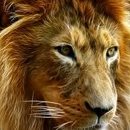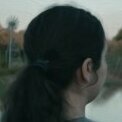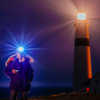
graflex
-
Posts
54 -
Joined
-
Last visited
-
Days Won
1
Reputation Activity
-
 graflex got a reaction from teaandcake in Fuji XT-2 Raw : worm effect when photographing small leaves and flowers
graflex got a reaction from teaandcake in Fuji XT-2 Raw : worm effect when photographing small leaves and flowers
Capture One is the best overall solution. Seems you're figuring that out. Dump Adobe.
-
 graflex got a reaction from Photonics in Fuji XT-2 Raw : worm effect when photographing small leaves and flowers
graflex got a reaction from Photonics in Fuji XT-2 Raw : worm effect when photographing small leaves and flowers
Capture One is the best overall solution. Seems you're figuring that out. Dump Adobe.
-
 graflex got a reaction from Kevin_B in Capture One Pro Fujifilm Vs Lightroom CC 8
graflex got a reaction from Kevin_B in Capture One Pro Fujifilm Vs Lightroom CC 8
"FUJI X-T3 ‘WORMS’
I presume that if you are reading this article then you will be familiar with the Fuji ‘Worms’ effect."
There is no Fuji Worms effect. There is an Adobe Worms effect.
"Adobe Lightroom struggles to sharpen Fuji X Trans RAW files without introducing some wormy artefacts."
No. Adobe's demosaicing of Fuji X-Trans raw files fails to appropriately render fine detail and that is the foundation of Adobe's Worms effect.
"Adobe has not addressed this issue and it looks likely that they may never do so. Sadly the issue persists in the latest release (Version 😎 of the software"
Indeed it does.
"The simplest solution to avoid the worms is to disable sharpening completely in Lightroom and sharpen either when exporting the file e.g. sharpen for web sharing or sharpen in Adobe Photoshop using unsharp mask filter."
No. The simplest solution to avoid the worms is to avoid Adobe software.
-
 graflex got a reaction from kimballistic in Raw preview in X-T20 with picture effect preview effect: off
graflex got a reaction from kimballistic in Raw preview in X-T20 with picture effect preview effect: off
If you want to use the live histograms and blinkies as exposure aids then you need to leave the picture preview turned on. The histograms and blinkies are derived from the video feed to the EVF. The EVF attempts to simulate what the image processor will create in the final JPEG.
You are not getting a raw preview and you can't. Using the EVF live before you take the photo you're not even getting a histogram of the JPEG. To get that you have to take the photo and then look at the histogram when you review the photo.
Fuji, along with all the other manufacturers, tunes their meters and engineers their EXR image processor to render a "well-exposed" JPEG from a raw file that under-utilizes the sensor's recording capacity.
If you really feel you need to see in the histogram and blinkies data that more closely reflects the raw file you'll look into setting the white balance to unity. Do you like green? With the WB set to unity your EVF will be green and your JEPGs will be green but the histogram and blinkies will be pretty close to indicating the actual status of the raw exposure -- picture effects stay on.
Go here: https://www.rawdigger.com
-
 graflex got a reaction from Spike666 in New Lightroom
graflex got a reaction from Spike666 in New Lightroom
The DNG that IR-X outputs is a linear DNG -- a demosaiced RGB file in a DNG wrapper. You're no longer working with your original data then.
No raw converter is a "best solution" so we all have to make a compromise choice. One is better with "A" and weaker with "B" and vice versa. I think LR is a very good compromise choice and it works well for a lot of people. The issue with LR's RAF demosaicing/fine detail is pretty minor. It's certainly capable of rendering an excellent image. Just make sure you keep the original RAF file and if you find one that you're not happy with in LR then you always have to option to re-process it with different software.
-
 graflex got a reaction from lisa in Post Processing with Adobe Lightroom
graflex got a reaction from lisa in Post Processing with Adobe Lightroom
Keep the RAF files and avoid the DNG option. Over time and likely in the future you'll be better off keeping your originals.
That question opens up a can of worms. So the answer is resoundingly NO and absolutely YES. LR is the most popular application for post processing camera raw files. It has earned that position because of it's overall feature set which is an excellent balance of function and usability. It's the go to choice of most photographers. Fuji X cameras use Fuji's proprietary X-Trans CFA which is trickier to demosaic than conventional Bayer array CFAs. Adobe turns in a weak performance demosaicing X-Trans RAF files -- rendition of fine detail is frequently poor. This puts Fuji X camera users in a bit of a bind. Alternative raw converters for the most part do a better job than LR with the fundamental first task of demosaicing the CFA. Notably: Capture One, Iridient, SilkyPix, PhotoNinja, Raw Therapee and even ACDSee. A compromise choice made by many Fuji X camera users is to rely on an alternate like Iridient or PN to demosiac the RAF file and then continue processing in LR. Otherwise I recommend a clean break and adoption of Capture One as an LR replacement. LR's DAM features tend to rate higher than C1 but C1 will do a better job processing an RAF file.
No it doesn't. Fuji stores lens profile data in the RAF file and LR reads and applies it. As such there's no need for Adobe to create separate lens profiles.
-
 graflex got a reaction from FenFotos in Is X-T2 Dynamic Range on par with FX?
graflex got a reaction from FenFotos in Is X-T2 Dynamic Range on par with FX?
Very close.
DR chart
An issue to consider with the X-T2 is Fuji's decision to set the camera's base ISO at 200. Notice in the linked chart that Bill Claff measures the X-T2 DR at 10 stops/ISO 200 and the 810 at 10.28 stops/ISO 200 -- .28 isn't a big deal. Fuji, for whatever reasons, has set the camera base ISO high relative to the sensor's real limits and capability. Leaving the X-T2 at ISO 200 there's considerably more there if you increase exposure. I've gotten into the habit with my X-T2 of leaving the EC set to +1 and will frequently take the photo at +1.3 to +1.7.
Consider this comparison between the X-T2 and Sony 6300 which are both using the same Sony sensor. Sony selects base ISO as 100 and Bill Claff measures nearly 1 stop more DR for the Sony camera:
DR chart
Well it's the same sensor and it doesn't really lose a stop of DR because it's in a Fuji camera instead of a Sony or Nikon camera. Same sensor is also in a Nikon D500 and its base ISO is 100 and sure enough its DR performance matches the Sony 6300. The ISO ratings that camera manufacturers assign are not ISO ratings for the sensor they're for the JPEG output of the camera's image processor.
Still the 810 and now 850 are better, but if you expose for the sensor in the X-T2 it's close.
-
 graflex got a reaction from kimballistic in Post Processing with Adobe Lightroom
graflex got a reaction from kimballistic in Post Processing with Adobe Lightroom
Keep the RAF files and avoid the DNG option. Over time and likely in the future you'll be better off keeping your originals.
That question opens up a can of worms. So the answer is resoundingly NO and absolutely YES. LR is the most popular application for post processing camera raw files. It has earned that position because of it's overall feature set which is an excellent balance of function and usability. It's the go to choice of most photographers. Fuji X cameras use Fuji's proprietary X-Trans CFA which is trickier to demosaic than conventional Bayer array CFAs. Adobe turns in a weak performance demosaicing X-Trans RAF files -- rendition of fine detail is frequently poor. This puts Fuji X camera users in a bit of a bind. Alternative raw converters for the most part do a better job than LR with the fundamental first task of demosaicing the CFA. Notably: Capture One, Iridient, SilkyPix, PhotoNinja, Raw Therapee and even ACDSee. A compromise choice made by many Fuji X camera users is to rely on an alternate like Iridient or PN to demosiac the RAF file and then continue processing in LR. Otherwise I recommend a clean break and adoption of Capture One as an LR replacement. LR's DAM features tend to rate higher than C1 but C1 will do a better job processing an RAF file.
No it doesn't. Fuji stores lens profile data in the RAF file and LR reads and applies it. As such there's no need for Adobe to create separate lens profiles.
-
 graflex got a reaction from brown in X-T20 skin tone issue
graflex got a reaction from brown in X-T20 skin tone issue
Given the structure of the X-Trans CFA I can imagine that you're looking at demosaicing artifacts in the squarish pattern that you're seeing. X-Trans is more prone to artifacts in the demosacing process than a Bayer array, but you must understand that all demosaicing of CFAs produces artifacts -- no option exists not to do that and at 527.3% magnification no option exists not to see them. Just remember that at 527.3% magnification you may also be seeing artifacts created by the software enlarging your image to that size and/or an interaction between those artifacts and the demosaicing artifacts that you can no longer really see because of that interaction.
Look at the photo on screen at 100% magnification. Does it look OK?
-
 graflex got a reaction from vttai84 in X-T20 skin tone issue
graflex got a reaction from vttai84 in X-T20 skin tone issue
Given the structure of the X-Trans CFA I can imagine that you're looking at demosaicing artifacts in the squarish pattern that you're seeing. X-Trans is more prone to artifacts in the demosacing process than a Bayer array, but you must understand that all demosaicing of CFAs produces artifacts -- no option exists not to do that and at 527.3% magnification no option exists not to see them. Just remember that at 527.3% magnification you may also be seeing artifacts created by the software enlarging your image to that size and/or an interaction between those artifacts and the demosaicing artifacts that you can no longer really see because of that interaction.
Look at the photo on screen at 100% magnification. Does it look OK?
-
 graflex got a reaction from johant in X-T20 skin tone issue
graflex got a reaction from johant in X-T20 skin tone issue
Given the structure of the X-Trans CFA I can imagine that you're looking at demosaicing artifacts in the squarish pattern that you're seeing. X-Trans is more prone to artifacts in the demosacing process than a Bayer array, but you must understand that all demosaicing of CFAs produces artifacts -- no option exists not to do that and at 527.3% magnification no option exists not to see them. Just remember that at 527.3% magnification you may also be seeing artifacts created by the software enlarging your image to that size and/or an interaction between those artifacts and the demosaicing artifacts that you can no longer really see because of that interaction.
Look at the photo on screen at 100% magnification. Does it look OK?
-
 graflex got a reaction from Scott Grant in X-T20 skin tone issue
graflex got a reaction from Scott Grant in X-T20 skin tone issue
Given the structure of the X-Trans CFA I can imagine that you're looking at demosaicing artifacts in the squarish pattern that you're seeing. X-Trans is more prone to artifacts in the demosacing process than a Bayer array, but you must understand that all demosaicing of CFAs produces artifacts -- no option exists not to do that and at 527.3% magnification no option exists not to see them. Just remember that at 527.3% magnification you may also be seeing artifacts created by the software enlarging your image to that size and/or an interaction between those artifacts and the demosaicing artifacts that you can no longer really see because of that interaction.
Look at the photo on screen at 100% magnification. Does it look OK?
-
 graflex got a reaction from Morne in RAW converters comparison
graflex got a reaction from Morne in RAW converters comparison
Yes. I consider Affinity unusable for raw processing and particularly so for Fuji RAF files. Affinity has an X-Trans problem with color artifacting. More importantly it has a very odd design quirk that I consider fatal. Affinity's raw processing is destructive; it forces you to "develop" the raw file to an RGB image (TIFF) and in the process it trashes all the work you did with the raw processing tools. You're left with the TIFF (afphoto) file but should you decide to return to the raw processing tools and the work you did with the raw file you're forced to start from scratch. Unacceptable.
-
 graflex got a reaction from KP Ho in Pixel problems??
graflex got a reaction from KP Ho in Pixel problems??
OK -- definitely a demosaicing error. You're seeing an artifact of the CFA generated by a failure in the demosaicing algorithm. It's your processing software. From what you've written so far here's what I assume: You have an older copy of LR/Photoshop which does not support your camera. So you're using the Adobe DNG converter to generate a DNG file and then you're processing that DNG file with the older LR/Photoshop. Your older copy of LR/Photoshop is the point of failure.
For reference: processing using Fuji Raw Converter: clouds
Your options: You can keep doing what you're doing but you need to make a change in the Adobe DNG raw converter: Open DNG converter and under item #4 click the box Change Preferences. Click the dropbox Compatibility and select Custom. In the dialog that pops up check the box Linear. You're good to go. The DNG files will be larger but they'll work.
You can demosaic the RAF files wth other software. Fuji supplies a version of SilkyPix with the camera -- I used that for the above file. There are lots of other options from free to $$$.
-
 graflex got a reaction from Neil_42 in Macro lens?
graflex got a reaction from Neil_42 in Macro lens?
An enlarging lens makes a great macro lens. Fuji makes it easy to mount basically anything to their cameras. High quality enlarging lenses are nearly being given away these days -- I just pulled one out of a drawer. I mounted a 60mm Rodagon to my camera, from what I can see Fuji's 60mm may be nearly as good but it's a lot more $$$$. You lose the auto-focus and auto control of the aperture, but odds are you're on a tripod and focus peaking anyway so no real loss.
What I needed was:
1. 42mm to 39mm step ring. https://www.ebay.com/i/142170759478?chn=ps&dispItem=1
2. Set of 42mm extension tubes. http://www.ebay.com/itm/Macro-Extension-Tube-3-Ring-L8D-Set-Adapter-for-M42-42mm-Screw-Mount-Camera-Lens-/190771677877?hash=item2c6ae0cab5:m:mkzsdJiy3yrqcDryT2bR0yQ
3. Fujix X to 42mm helical adapter. https://www.ebay.com/i/331751586785?chn=ps&dispItem=1
I spent less than $50.00. You really want the X to 42mm adapter to have a focusing helicoid. How close you can get then just becomes a matter of the extension tube length. With a 60mm enlarging lens and the shortest tube in the set I can focus infinity. Here's a recent close-up.
-
 graflex got a reaction from woodlander in Macro lens?
graflex got a reaction from woodlander in Macro lens?
An enlarging lens makes a great macro lens. Fuji makes it easy to mount basically anything to their cameras. High quality enlarging lenses are nearly being given away these days -- I just pulled one out of a drawer. I mounted a 60mm Rodagon to my camera, from what I can see Fuji's 60mm may be nearly as good but it's a lot more $$$$. You lose the auto-focus and auto control of the aperture, but odds are you're on a tripod and focus peaking anyway so no real loss.
What I needed was:
1. 42mm to 39mm step ring. https://www.ebay.com/i/142170759478?chn=ps&dispItem=1
2. Set of 42mm extension tubes. http://www.ebay.com/itm/Macro-Extension-Tube-3-Ring-L8D-Set-Adapter-for-M42-42mm-Screw-Mount-Camera-Lens-/190771677877?hash=item2c6ae0cab5:m:mkzsdJiy3yrqcDryT2bR0yQ
3. Fujix X to 42mm helical adapter. https://www.ebay.com/i/331751586785?chn=ps&dispItem=1
I spent less than $50.00. You really want the X to 42mm adapter to have a focusing helicoid. How close you can get then just becomes a matter of the extension tube length. With a 60mm enlarging lens and the shortest tube in the set I can focus infinity. Here's a recent close-up.
-
 graflex got a reaction from TheWorldCan'tWait in Is it just me or the lowish light files are too noisy?
graflex got a reaction from TheWorldCan'tWait in Is it just me or the lowish light files are too noisy?
OK, a person then: Shot indoors with only a ceiling light fixture holding a couple CF bulbs -- ISO 12800. For an APS class camera I think this is pretty impressive. Excellent color and noise barely an issue.
-
 graflex reacted to kimcarsons in Is it just me or the lowish light files are too noisy?
graflex reacted to kimcarsons in Is it just me or the lowish light files are too noisy?
You're going to have this problem with any digital camera. You either need to use the built-in long exposure noise reduction function (assuming you're using the JPEGs) or shoot/apply your own dark frame images if you're processing the RAW files. If you really want the best results, shooting multiple shorter exposures and averaging them will produce better results than one long exposure of the same total duration.
-
 graflex got a reaction from photosol in Is it just me or the lowish light files are too noisy?
graflex got a reaction from photosol in Is it just me or the lowish light files are too noisy?
OK, a person then: Shot indoors with only a ceiling light fixture holding a couple CF bulbs -- ISO 12800. For an APS class camera I think this is pretty impressive. Excellent color and noise barely an issue.
-
 graflex got a reaction from Antonius in Watercolour??
graflex got a reaction from Antonius in Watercolour??
This problem is rooted in demosaicing the X-Trans color filter array. It is not a sharpening problem -- sharpening exposes and exacerbates the problem. Adobe has improved their handling of the X-Trans CFA but alternative raw converters do a better job of extracting fine detail from X-Trans raw files and avoiding the "watercolor effect." Iridient, Photo Ninja, SilkyPix, Capture One, Raw Therapee, ACDSee all do a better job demosaicing X-Trans. However that doesn't mean they do a better job processing X-Trans overall. There is no clearly best choice. You can get reasonable results from Adobe with careful handling. If maximum fine detail with no "watercolor appearance" is most important to you, you will avoid Adobe for the demosiacing task.
If you want to make a raw file available for others to see and work with use Dropbox (free account). Here for example is a link to an X-Trans II RAF file that exhibits the problem: https://www.dropbox.com/s/ewzhgah2bqjutqw/DSCF3971.RAF?dl=0
-
 graflex got a reaction from sgmcenroe in Is it just me or the lowish light files are too noisy?
graflex got a reaction from sgmcenroe in Is it just me or the lowish light files are too noisy?
OK, a person then: Shot indoors with only a ceiling light fixture holding a couple CF bulbs -- ISO 12800. For an APS class camera I think this is pretty impressive. Excellent color and noise barely an issue.
-
 graflex got a reaction from sgmcenroe in Is it just me or the lowish light files are too noisy?
graflex got a reaction from sgmcenroe in Is it just me or the lowish light files are too noisy?
I just got my X-T2 two weeks ago but I'm finding the high ISO results to be quite good. This is ISO 12800:
-
 graflex got a reaction from spivey in Is it just me or the lowish light files are too noisy?
graflex got a reaction from spivey in Is it just me or the lowish light files are too noisy?
OK, a person then: Shot indoors with only a ceiling light fixture holding a couple CF bulbs -- ISO 12800. For an APS class camera I think this is pretty impressive. Excellent color and noise barely an issue.
-
 graflex got a reaction from Immanuel in Is it just me or the lowish light files are too noisy?
graflex got a reaction from Immanuel in Is it just me or the lowish light files are too noisy?
OK, a person then: Shot indoors with only a ceiling light fixture holding a couple CF bulbs -- ISO 12800. For an APS class camera I think this is pretty impressive. Excellent color and noise barely an issue.
-
 graflex got a reaction from steviewonder in Is it just me or the lowish light files are too noisy?
graflex got a reaction from steviewonder in Is it just me or the lowish light files are too noisy?
OK, a person then: Shot indoors with only a ceiling light fixture holding a couple CF bulbs -- ISO 12800. For an APS class camera I think this is pretty impressive. Excellent color and noise barely an issue.









